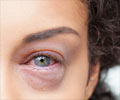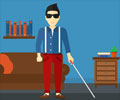Scientists from Vanderbilt University Medical Centre have developed new night vision goggles which can help people in air ambulance service.
Scientists from Vanderbilt University Medical Centre have developed new night vision goggles which can help people in air ambulance service.
The technology was earlier used for military operations or secret spy missions. They have the ability to enhance light 10,000 times and turn night into day.Three of Vanderbilt LifeFlight's four bases are already using night vision, and the final base should be trained by early 2010.
"You can see a lit cigarette 10 miles away," said Wilson Matthews, R.N., E.M.T., chief flight nurse for LifeFlight's base in Lebanon, Tenn., who is part of the night vision transition.
"You go from seeing nothing to seeing the texture of tree leaves," Matthews added.
He said night vision will be most useful when making scene landings because pilots and nurses will be able to see the trees, power lines, rising terrain and other hazards on the ground.
"Night vision is absolutely amazing. I have been at LifeFlight since 1997, and this is the single best thing we have done to enhance safety," said Mathews.
Advertisement
Night vision works by gathering ambient light from the moon, stars or distant light sources into a special tube.
A five-hour training program is required for pilots and nurses, and pilots have additional required hours of use in the sky, including take-off, landing, emergency procedures and transitioning between night vision and regular vision.
The goggles look like binoculars and are mounted on the front of the helmet. Matthews said one disadvantage is the loss of peripheral vision.
"It's like looking through two tubes," he said.
"Pilots also have to transition from looking through night vision to looking down at the instrument panel with regular vision. They are also heavy on the helmet and can give you a sore neck the next day," he added.
Source-ANI
TAN











